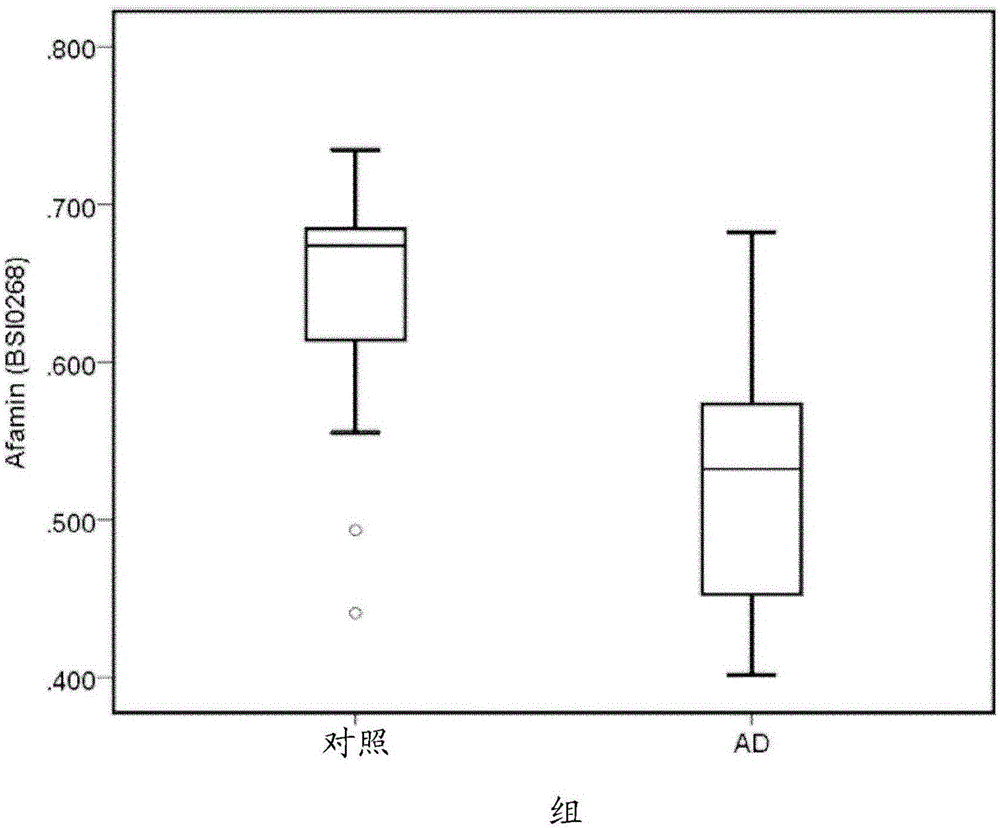Methods and compositions for the diagnosis of alzheimer's disease
A technology that combines proteins and biomarkers, applied in the field of Alzheimer's disease diagnosis, can solve problems such as undiscovered clinical practicability
- Summary
- Abstract
- Description
- Claims
- Application Information
AI Technical Summary
Problems solved by technology
Method used
Image
Examples
Embodiment Construction
[0025]The present invention describes a biomarker-based approach to aid in the diagnosis of Alzheimer's disease (AD). Specifically, the relative levels or concentrations of biomarkers in fluid samples taken from patients suspected of having AD or subjects at risk of developing AD were examined. In the context of the present invention, the utility of diagnosing AD is taken as an example. However, the present invention contemplates that it may also be used to monitor the progression of AD, and to diagnose and monitor other forms of dementia and cognitive impairment, these include but are not limited to: Parkinson's dementia, Lewy body dementia, vascular dementia, minimal cognitive impairment , Frontotemporal dementia. In the context of the present invention, the term "biomarker" refers to a molecule present in a patient's biological sample, the level of which in said biological fluid may be indicative of Alzheimer's disease. Such molecules may include peptides / proteins or nucl...
PUM
 Login to View More
Login to View More Abstract
Description
Claims
Application Information
 Login to View More
Login to View More - R&D
- Intellectual Property
- Life Sciences
- Materials
- Tech Scout
- Unparalleled Data Quality
- Higher Quality Content
- 60% Fewer Hallucinations
Browse by: Latest US Patents, China's latest patents, Technical Efficacy Thesaurus, Application Domain, Technology Topic, Popular Technical Reports.
© 2025 PatSnap. All rights reserved.Legal|Privacy policy|Modern Slavery Act Transparency Statement|Sitemap|About US| Contact US: help@patsnap.com



